When is the best time to drink tea? In Japan, it?s the beverage of choice to wake up in the morning and drink after meals, or during work. This month Fukuoka Now focuses on green tea, the national drink that is an essential part of Japan?s food culture. Access our website to learn about the drink?s history, varieties, how to enjoy it, how to store it, its benefits, and where to buy it in Fukuoka.
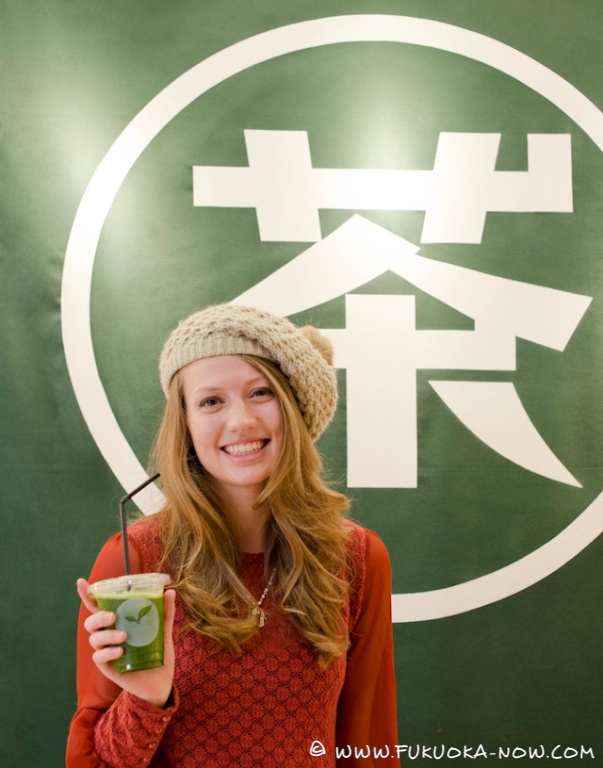
From China to Fukuoka, and then Japan
The primary tea varieties are green tea, oolong tea, and the red pekoe tea. They are all derived from the same tea plant, but result from different production processes. There are different ways to brew tea and enjoy the different flavors, aromas, and colors. For example, green tea in Japan is generally divided into the leafy sencha and the powdered matcha. There are also several varieties that differ with the cultivation and production processes, including sencha, the coarser bancha, and the refined gyokuro. Tea was originally grown in China?s Yunnan Province, and it was brought to Japan after the Nara Period. In 1192, Eisai brought tea seeds and sowed them on Mt. Chikuzen Sefuri on his return. This tea was transplanted to Shofuku-ji, a Zen temple in Hakata. After being cultivated in Fukuoka, its use spread nationwide to become the national beverage.

Yame tea- the top crop
Tea is cultivated throughout Japan today in such locations as Uji and Shizuoka. There are several well-known production areas in Kyushu, too, including Yame, Ureshino, and Chiran. It is grown in areas with a large temperature differential, and the most renowned plantations in Fukuoka are in Yame. The tea plantations are located in the basins of the Yabe and Hoshino Rivers. Fukuoka is the main production region for gyokuro tea in Japan, accounting for half the volume nationwide. Both the Yame sencha and the gyokuro are known for a rich flavor with little bitterness or astringency. The tea is harvested from the end of April to the beginning of May. Many Japanese associate the tea?s color and aroma with the advent of summer.
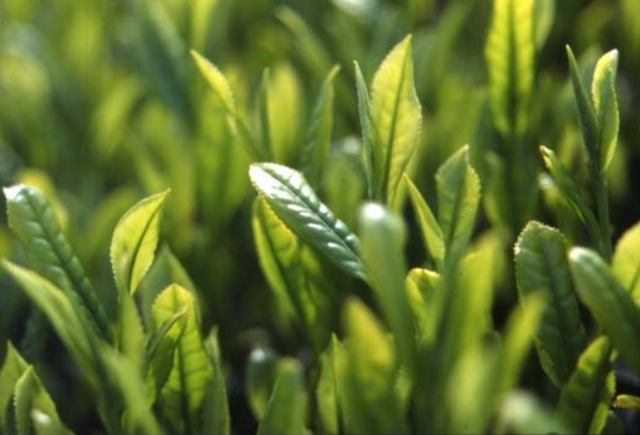
Enjoy the national beverage
Tea is emblematic of the Japanese food culture. Each variety has its own characteristics, and drinking it at the best temperature, in the proper size cup, at just the right time, enables the distinctive aroma and flavor to be savored to the fullest. You don?t have to go to all the trouble that matcha requires, but you?ll be sure to rediscover tea delights by carefully brewing ordinary tea. The rest of the world may enjoy red pekoe tea, coffee, or cocoa at tea time, but take a relaxed cup of green tea and see for yourself how enjoyable it is.
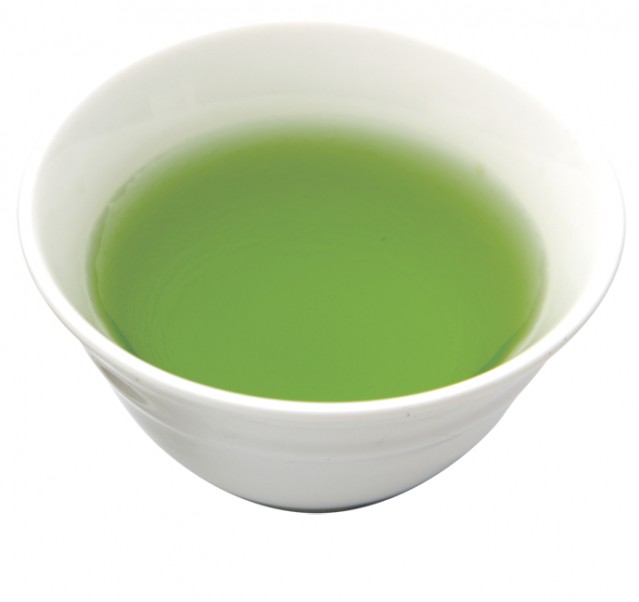
Tea varieties
The flavor, aroma, and color of tea differ with the methods of cultivation and processing. These can be divided into several different types.

? Jyokyu Sencha (High quality sencha): This is the highest quality sencha. The tea is picked early in spring and is noted for its refreshing aroma.
? Bancha: This lower quality sencha is harvested in summer after it has been drenched in sunshine. It is characterized by a fresh flavor without sweetness.
? Genmaicha: This is a combination of sencha, bancha, and roasted brown rice. Both mochi rice and nonglutinous rice are used, and different proportions of the ingredients create different flavors.
? Gyokuro: This is the highest quality tea in Japan. The new leaves are cultivated by blocking off direct sunlight. It has a rich sweetness with no astringency at all.

? Hojicha: Hojicha has a unique aroma resulting from roasting sencha and bancha at high temperatures. It has a full-bodied flavor and little caffeine, so is perfect for children.
? Konacha: The powdered tea generated from the production process for sencha and gyokuro is used to make this product. Most of the tea served in sushi shops is powdered tea.
? Kukicha: This tea is made from the stalks removed during the process of making sencha. The stalks of gyokuro, called karigane, are prized by tea lovers.
? Matcha: As with gyokuro, the new tea is cultivated by covering it from the sun. It is dried after steaming. The stalks are removed, and it is crushed to a fine powder in a pestle.
Drink it at home
The proper way to brew new tea
Hotter water brings out the aroma of the tea, while slowly pouring in slightly cooler water will bring out the sweetness of higher quality tea. Aroma is the critical element for new tea, so use hotter water for a short period of time.
1. First, pour boiling water into the pot and wait for it to cool. This also will warm the pot.
2. Then pour the hot water from the pot into the cup and let it cool to 80 degrees. This also will warm the cup.
3. Put about five or six grams of tea into the warmed pot to brew about two cups. The photo shows two cups? worth of tea.
4. Pour the water from the cup back into the pot. Let it sit for about 40 to 50 seconds to bring out the flavor.
5. Finally, slosh the tea around evenly and pour out to the last drop. The second batch tastes the best.
*The astringency emerges with the second cup, so pour out the hot water right away as soon as you put it in the pot.
Use the best water
The water used for brewing will affect the flavor and aroma of even the best tea. We recommend using mineral water (soft, not hard water), or tap water boiled once to remove the chlorine. See which works best for you!
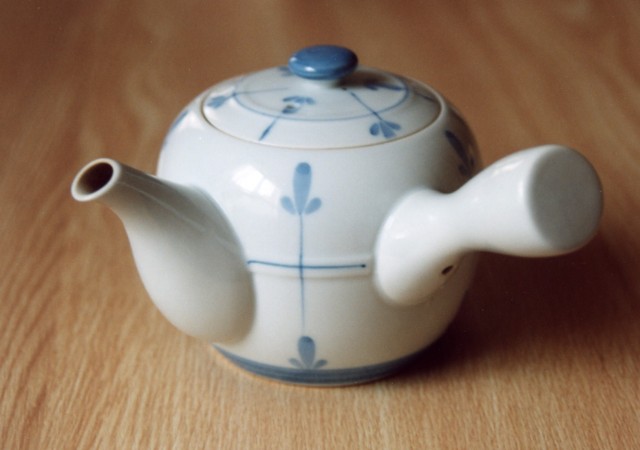
The proper way to store tea
It?s best to store tea in a cool, dark place to eliminate the effect of heat and light. Store in a tight container to prevent contamination by odors.
Tea box: Here are the implements you need for delicious Japanese tea.
Kyusu: Hot water is poured into this utensil to brew tea. Small pots are used for sencha and gyokuro, and large pots are used for bancha.
Chazutsu: This receptacle is used to store the loose tea. It is a cylindrical tube that comes in different sizes and designs. The caddy selected reflects the individual?s personal style.
Chasaji: This utensil is used to scoop the tea leaves out of the caddy. They are made from different materials, including bamboo, wood, or stainless steel.
The benefits of green tea
Tea is a perennial shrub in the Theaceae family. Red pekoe tea is produced by fully fermenting the leaves, oolong tea is produced by partially fermenting the leaves, and green tea is not fermented at all. The tea leaves are fermented as soon as they?re picked, and oxidize. Green tea is not fermented, so it preserves the nutrients, including catechin, carotene, and vitamins. Here are some of green tea?s health benefits.
1. Prevents tooth decay and bad breath
Catechin limits the growth of the bacteria causing tooth decay and freshens the mouth. This effect is best achieved by drinking it after meals.
2. A pick-me-up that sobers you up
The caffeine provides a stimulus and clears the head. This effect is best achieved by using hotter water.
3. Effectively burns body fat
The caffeine promotes the metabolism of fat. Drinking green tea and engaging in physical activity burns up body fat.
4. Beautifies the skin
Drinking tea maintains the skin?s elasticity, and the vitamin C strengthens the capillaries. It also improves the skin?s ability to retain warmth.
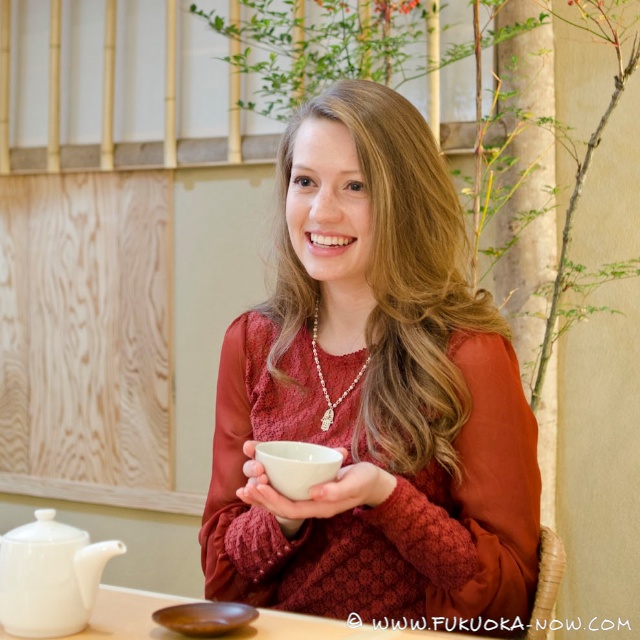
5. Prevents hardening of the arteries and high blood pressure
Tea reduces the cholesterol in the blood and prevents high blood pressure.
6. Protects against colds
Green tea strengthens the body?s defenses against infection, so using it as a gargle protects against viruses.
7. Prevents aging
Tea?s strong antibacterial properties limit oxidation in the body and maintains a pH balance by promoting the body?s alkalinity.
8. Prevents food poisoning
The catechin has a powerful effect on the bacteria causing food poisoning. It also regulates intestinal functions. It was a wise decision to pair sushi with green tea.
Surprising ways to use green tea
The new tea picked at the end of April is generally called ichiban tea. This is followed by niban and sanban tea, and the flavor gradually becomes that associated with bancha. Therefore, tea is cultivated and consumed throughout the year. It is not only drunk, however. There are other ways to obtain the benefits of tea by using the old leaves. Here are some other ways to enjoy it.
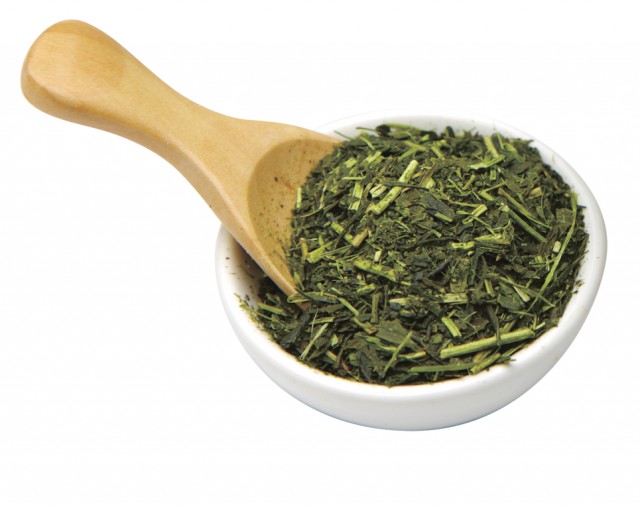
? Soak in a tea bath! Put tea leaves in a cotton cloth and put into the tub. Tea is rich in vitamin C, so it will smooth rough skin and restore its luster. It also will help warm the body.
? Use old leaves for smooth white skin. After washing the face, put old tea leaves in water and splash it on your face to get the benefits of the vitamin C.
? Grandma used it to help with housecleaning. Putting old tea leaves on tatami mats will clean hard-to-reach dirt in between the strands.
? Prevents rust. Wiping steel pots or vases with old tea leaves will create a tannin layer that prevents rust.
? Removes refrigerator odors. Putting old dried tea leaves in the refrigerator will eliminate unpleasant odors. Good for cutting board odors too! Pour hot water on old tea leaves and spread it on a cutting board to kill germs and remove odors.
? Use it as incense. Heating tea leaves in an incense burner will produce an enjoyable fragrance. It eliminates odors and has a relaxing effect.
A round-up of the shops with the best tea
Fukuoka City has several shops specializing in tea, including long-established tea merchants and new cafe style shops. Just follow your nose!
????????????
1. Tagashira Chaho ????
Linked to the authentic Japanese tea house Tagashira Tea (founded 1930), this new cafe is a green tea lover?s dream come true! Using luxurious Yame matcha and roasted green tea from Kyoto, Tagashira Chaho?s menu features an array of tea flavored parfaits, shakes and soft creams, along with 16 types of regular hot tea. Take out available, but we recommend enjoying the shop?s atmosphere and cheery staff.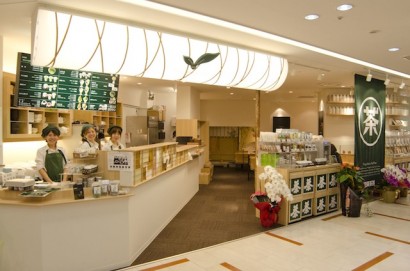
Category: Cafe
Address: B1F IMS Fukuoka, 1-7-11, Tenjin, Chuo-ku, Fukuoka City
Tel.: 092-726-6533
Open: 10:00~20:00
Web: http://www.yuicha.jp/
????????????
2. Nonaka no Yamecha
This shop in the Kamikawabata shopping area along the Hakata River promenade specializes in yamecha. It features the finest Japanese tea selected by the proprietor. It also offers the utensils needed to make and drink tea. It?s a great place to go for gifts.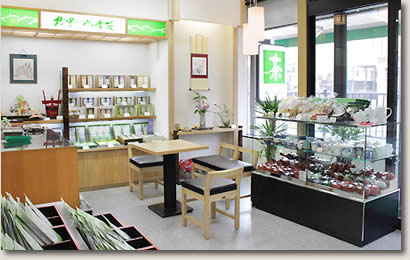
Category: Tea shop
Address: 11-283 Kamikawabatamachi, Hakata-ku
Phone: 092-271-0452
Open: Weekdays 9:30~18:00, Sat. 10:00~18:00
Closed: Sun., Hol., New Year?s Hol., Obon.
Web: http://www.teashop.co.jp/aboutus/index.html
????????????
3. Tea Shop Hoji-ya
Located on the B2F floor of Hakata Riverain, you can buy top grade leaves from all over Japan at this tea shop. Hoji-ya secializes in hojicha roasted tea, and kikicha, an original blend tea for health and beauty. You can also purchase delicious Japanese sweets to complement your tea. Many varieties of dorayaki (beans paste sweets) including matcha (green tea), and other Japanese flavors available. There?s also a small cafe space to enjoy your purchased sweets with free hot tea.?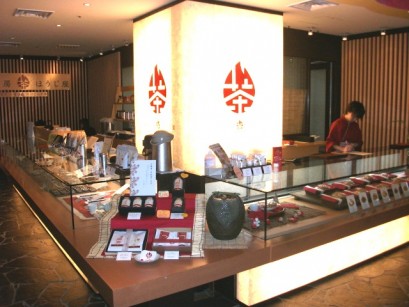
Category: Tea & sweets shop/cafe space
Address: B2F Hakata Riverain, 3-1 Shimokawabata-machi, Hakata-ku
Phone: 092-282-3734
Open: 10:30~19:30
Web: http://www.em3.jp/floorguide/b2f/houjiya/index.html
http://www.hinosabo.jp/user_data/shop.php?PHPSESSID=qe8irqanacmq5mr2tu208brf75
????????????
4. Hakata Sakura
This tea shop sells high quality leaves selected from across Kyushu, including yamecha from Yame Prefecture. The shop?s exterior resembles a traditional Japanese style house. Inside, you?ll find tea leaves, kyusu (small teacupts) and yunomi (cups), along with many colorful patterned tea storage tins ? a great souvenir!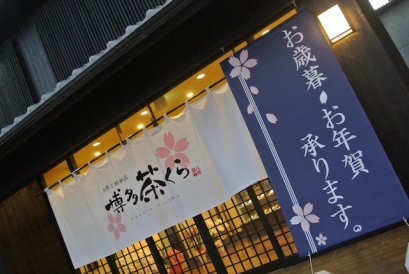
Category: Tea Shop
Address: 1-24-14 Hakataekimae, Hakata-ku
Phone: 092-431-3272
Open: 10:00~19:00
Web: http://www.hakatasakura.com/index.html / http://www.facebook.com/west24764
????????????
Model info: This month?s cover was shot at Tagashira Chaho (B1F IMS), with model Paige Connell from Seattle, USA. Paige was in Japan on a trip with her father, and brother Nick (pictured below). While in Fukuoka, Paige studied Japanese at Genki Jacs language school in Akasaka (http://genkijacs.com)
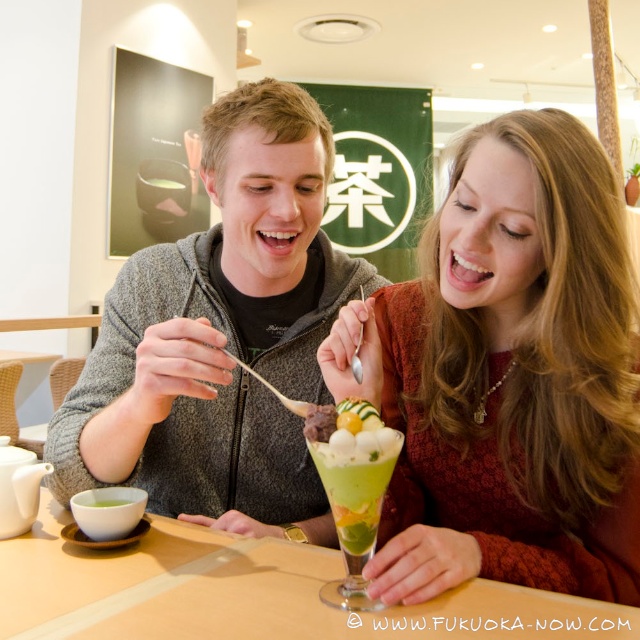
If you?re interested in becoming a FN cover model, apply here: http://bit.ly/fncovermodel.
Originally published in Fukuoka Now Magazine (fn169, Jan. 2013)
the host trailer whitney houston cause of death marquette university marquette hilary duff michigan state michigan state
No comments:
Post a Comment
Note: Only a member of this blog may post a comment.